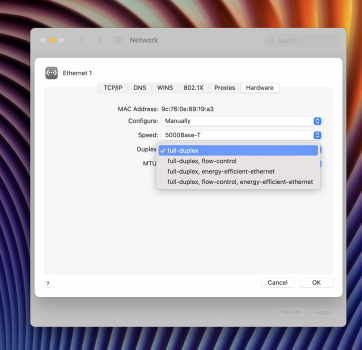I compared the internal 10 Gbit/s network adapter of my base model Mac Studio (Max) with an external Thunderbolt 3 10 Gbit/s network adapter from Sonnet.
Internal:

External:

The difference seems to be a more conservative power ramp up (take a look at the beginning and the end of the graph) of the internal network adapter, which results in slightly less average speed compared to the external adapter, which is more aggressive using power and does indeed use more power:

Internal:
External:
The difference seems to be a more conservative power ramp up (take a look at the beginning and the end of the graph) of the internal network adapter, which results in slightly less average speed compared to the external adapter, which is more aggressive using power and does indeed use more power:


